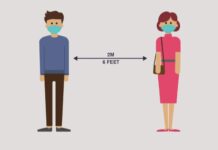One of the major concerns related to the pandemic caused by the coronavirus, as debated as the importance of prevention, concerns the economic impacts resulting from measures to contain contamination rates, with the quarantine and temporary closure of several activities in addition to the most obvious essential examples. . With this, authorities are constantly debating the need to loosen such measures to avoid collapses, rising unemployment rates and so on. However, does preserving lives have a price? According to a study, yes. About 5.2 trillion dollars.
This is the estimate of English researchers published in the Journal of Benefit-Cost Analysis, of the University of Cambridge. According to the article, the financial results of closing trade, when compared to a “normal” situation, are really disastrous, but that changes in a pandemic scenario. After all, the ideal scenario no longer exists, and it is necessary to deal with the consequences of the reality in question.
Therefore, it is necessary to understand that, at this moment, the calculation considers how much it costs to restrict circulation and what would be the results of not joining the action, exposing the population to covid-19.
What is the value of life?
Pricing life is somewhat complicated because it essentially involves moral issues. There are plenty of examples on social networks: if, for example, seven deaths from the disease can be considered an acceptable risk, when fatalities involve members of your family, is the weight the same? This is a classic dilemma.
In another example, even if it is said that the value of human life is infinite, it is unlikely that anyone would exhaust the world’s resources to save a single person. Still, there is a consensus that this “asset” deserves the investment of high figures - and this statistic is part of our daily lives.
When you pay vehicle fees, you are even contributing to monetary compensation in the event of accidents. The additional dangerousness of certain activities received by those who perform them is also a price on the risks inherent to the profession. In this struggle between the generation of resources and the loss of those who produce them, one arrives at the so-called Value of Life, used by economists all over the world to quantify the implicit costs of death and how much they must be reverted to the living.
Although variations are applied according to each membership, in the United States, the Value of Life is estimated at about US $ 10 million dollars - the same number considered in the studies by Linda Thunström and her colleagues to understand the financial impacts of distance Social. There, the researchers began a series of calculations.
And how much is it worth to preserve life?
Considering that the distance measures are able to preserve about 1.24 million lives in an average of 38% of effectiveness in the absence of contact, the values are converted into US $ 12.4 trillion. If the forecast of the financial group Goldman Sachs is correct, the United States’ GDP, for example, will shrink 6.2% with the measures, representing a total loss of about US $ 13.7 trillion.
Thus, the isolation scenario must be compared to the non-isolation scenario. In the estimates of the same company, maintaining activities can normally retract the country’s economy in numbers ranging from 1.5% to 8.4%. The researchers then suggested a 2% retraction. Thereafter, the economic impact would be less, reaching US $ 6.49 trillion - less than half of the losses with isolation. Therefore, in these scenarios, the cost of social distance is US $ 7.21 trillion.
Exemplifying with values in trillions of dollars:
- 13.7 (loss forecast with insulation) - 6.49 (loss forecast with insulation) = 7.21 (cost of insulation)
- 12.4 (Life Value) - 7.21 (cost of isolation) = 5.19 (price of lives saved)
That is, in these examples, the preservation of life costs, on average, almost US $ 5.2 trillion. The benefit of life, therefore, comes at a price - which, remembering, can be recovered by 1.2 million saved people.
Everything changes all the time
Of course, all of this is just an assumption and that all the values presented can be changed, both the applied Life Value and the retraction of the economy. The rate of effectiveness of social detachment coupled with the degree of mortality from coronavirus can bring completely different scenarios.
A model published by Imperial College London, for example, indicates that the death toll in the United States without any measure could reach 2.2 million. The economic impacts would be incalculable. However, on April 26, fatalities reached “only” 50 thousand. If in August there are no more than 60 thousand, it would be 2.14 million lives saved - almost double the study. In the worst case scenario, with 124,000 deaths, social isolation would still save 1.24 million people.
Despite the variables, American universities reached a consensus: the restart of the economy must happen only with a big increase in the capacity of tests and a well-formed plan to control new outbreaks. There, the survivors can continue fighting to get the economy back as soon as possible.










